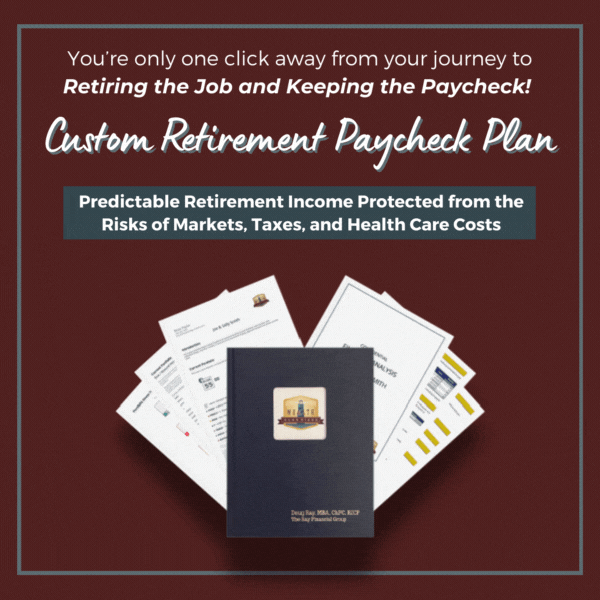 Financial advisers will tell you that the most telling — and risky — years of your retirement are the five before you leave the 9-to-5 world, and the five after you have forsaken a steady paycheck and learn to live on Social Security, perhaps a pension, and a lifetime of wealth accumulation through a retirement plan. Indeed, making your money last as long as you and your spouse do consistently show up as the biggest worry among folks approaching or in retirement.
Financial advisers will tell you that the most telling — and risky — years of your retirement are the five before you leave the 9-to-5 world, and the five after you have forsaken a steady paycheck and learn to live on Social Security, perhaps a pension, and a lifetime of wealth accumulation through a retirement plan. Indeed, making your money last as long as you and your spouse do consistently show up as the biggest worry among folks approaching or in retirement.
To help you with these vexing questions, we’re sharing the top 11 insights we give to our clients.
The Biggest Secret Lies Long Before Retirement
Falling into the consumption trap can kill anyone’s chances to make it through retirement. It’s tough enough to save what’s needed for retirement. Poor spending habits are a key factor. Those trying to save enough to retire would be wise to remember that their future selves will appreciate their restraint in their younger years. It’s a simple concept, but often hard to execute.
Have a Realistic Expectation of How Long You’ll Live
How long do you need to plan for your retirement? A lifetime, of course. But how long is that? You could try the calculator from the Social Security website, but it will only give you an “average” life expectancy, and the problem with that is if you used that number for your planning, you could have a 50% probability of outliving your savings.
So, what are the alternatives? Here are a couple of options. One option is to make your best judgment of your life expectancy projection based on your health, family history, etc. After all, no one knows your situation better than yourself! Otherwise, use tools such as the livingto100 calculator, which takes your ethnicity, family history, health habits, etc., into consideration and generates a more customized life expectancy for you.
In either case, the more accurate your life expectancy projection, the more accurate your retirement plan will be, and the less likely you will outlive your assets!
Have a Stash of Cash and Bonds
Keep a certain amount of your investment portfolio in cash and safe assets that won’t lose principal, like one to three years of cash in the bank and an additional three to five years of investments in fixed products, like FIAs or IULs to cover living expenses. Here’s why: If the stock market craters, a person with five to 10 years of living expenses in cash and bonds can not only cover their expenses, but also preserve their investment portfolio as they are not forced to sell their stocks at temporarily low values. This strategy provides peace of mind.
Be Honest with Yourself About How Much You Really Need to Live on Once You Retire
Ron and Rhonda Retiree have what they feel is a huge amount of money for retirement but have done no planning. They tell us they can live on X amount of their retirement portfolio each month. So, we do a cash-flow analysis and estimate that the amount they want, let’s say around 5% annually, is sufficient for their needs.
But then it starts — the calls to the office for extra withdrawals. It seems they forgot to include some regular expenses — the long-delayed weekend jaunts or the maintenance on the boat or annual golf outings. They didn’t consider them a regular expense when we did the cash-flow analysis.
The result: A cash flow need estimated at 5% annually turns into a 7%, 10% even 15%. Burning through 5% a year was doable. But 15% is not realistic.
To Be Safe, Consider a Modified 4% Withdrawal Rule
Many people are familiar with the “4% withdrawal rule,” which assured retirees that by holding their annual withdrawals to 4% of their retirement portfolios it would allow their portfolios to last 30 years. However, that advice appears outdated and overly optimistic. A “Low Bond Yields and Safe Portfolio Withdrawal Rates” report by Morningstar found that the modified ‘safe’ withdrawal rate is 2.8%, and a retiree would be more than 50% likely to run out of money withdrawing 4%.
Retirees should follow the modified 4% rule and reduce the amount for withdrawals from their retirement accounts every year after big losses or gains in their portfolios, inflation, and other circumstances.
Make Sure to Maximize Your Social Security Benefits
Now, more than ever, it’s important for retirees to maximize their Social Security benefits. It’s a guaranteed income stream that you’ve earned through your years of hard work.
But you have to know how and when to take Social Security to maximize your benefits. Most people are amazed to learn there are more than 500 different claiming strategies and more than 2,000 governing rules. There are strategies for married couples, divorced couples, domestic partnerships and widows and widowers. Some are simple and straightforward, and some can be complicated and include multiple steps.
You Can’t Afford to Go TOO Conservative with Your Investments
Retirees face a tough decision-making process when it comes to their financial assets. On the one hand, you likely want to be able to generate income for as long as possible. On the other hand, you probably want to know that your savings are safe.
To balance these competing priorities, you may need to take on more investment risk than you were expecting.
Think about it this way: If your investments are growing at a low but steady rate that just barely keeps up with inflation, you won’t see your investment returns fluctuate much, but you’ll be losing money every year with account withdrawals. In other words, there is a real risk that you’ll outlive your assets.
A Monte Carlo Analysis Might Calm Your Fears
Named for the gambling center in Monaco, a Monte Carlo Analysis is essentially a forecasting model that takes as many variables into consideration as possible, then runs repeated simulations to determine how likely it is for this or that outcome to result from a given enterprise.
In terms of your retirement, a Monte Carlo Analysis checks whatever givens are present in your financial situation, then makes projections by taking as many market probabilities into account as possible. It also assesses the likelihood that you will achieve your financial goals. Typically, these probabilities include things like interest rates, years until retirement, spending habits and the diversity of your investment portfolio. The result is a representation of your most and least likely outcomes. Our Custom Retirement Paycheck Plan provides even more detailed analysis.
Consider Long-Term Care Insurance
A major reason most people fear running out of money in retirement is an unknown major expense, which is primarily the cost of a health issue, such as cancer, a heart attack, or a stroke.
Alas, there are a limited number of quality companies offering this insurance, and health qualifications continue to narrow while premiums have been rising.
Don’t Forget About Inflation
Inflation is a risk that most people simply don’t fully consider. Even with a 3% average annual inflation rate, the purchasing power of a dollar will fall by more than half, after 25 years.
As you spend down your retirement savings, inflation is costing you more money to live. Retirees should understand the long-term cumulative impact of inflation on their portfolio during retirement.
If You’re Still Feeling Unsure, Easing into Retirement Could Be the Answer
Retirement planning in the 21st century is not an all-or-nothing proposition. If you expect to live till 100, and if you fully retire at 65, you’d end up having 35 years of retirement! That is a long period of spending while not earning. Not ideal for your financial well-being or your personal well-being!
So, here is something to consider: Phase into retirement gradually. In other words, do not turn on the full-stop retirement switch yet. See if you can scale back and work fewer hours in your current job. Alternatively, consider working part-time at a lower-stress job. Or pick up consulting work. Or be your own boss and start a business.
Let us show you in black and white a custom retirement income plan that is comprehensive, individualized and based on strategies that balance growth with downside protection. Get your Custom Retirement Paycheck Plan now!
Give us a call at our Charlotte office at (704) 248-8549, or our Clemmons office at (336) 391-3409. Or, click here to request a no-cost, no-obligation meeting.
[SOURCES & ADDITIONAL DISCLOSURES]
Copyright © 2021 The Kiplinger Washington Editors. All rights reserved. Distributed by Financial Media Exchange.







